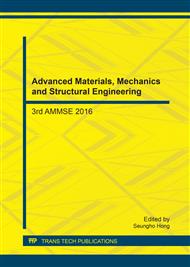p.149
p.157
p.163
p.170
p.175
p.183
p.189
p.195
p.201
Modeling and Experiment of a Novel Micro Wave Energy Converter
Abstract:
This paper proposed a novel micro wave energy converter which can convert irregular wave energy into rotating mechanical energy, then into electrical energy. The device consists of an energy absorption part and an energy conversion part. In details, the blades are installed on the absorber circumferentially and averagely, which are capable of converting the vertical motion of the surface body to continuous rotation of the absorber and leading to a great increase in efficiency. A physical prototype was built to test the performance of the novel generator and optimize the design parameters. In the experiment part, a linear motion electric cylinder was used as the drive power to provide the heaving motion for the device. And the experiment platform was built for modeling a marine environment. Also, a data acquisition program was edited in Labview. Thus, the experiment analyzed the influence of amplitude, frequency, blade angle and resistance value to the output power, and then obtained the optimum parameters combination which can maximize the value of the output power. The result will provide reference for the device’s further application.
Info:
Periodical:
Pages:
175-182
Citation:
Online since:
February 2017
Authors:
Keywords:
Price:
Сopyright:
© 2017 Trans Tech Publications Ltd. All Rights Reserved
Share:
Citation:


